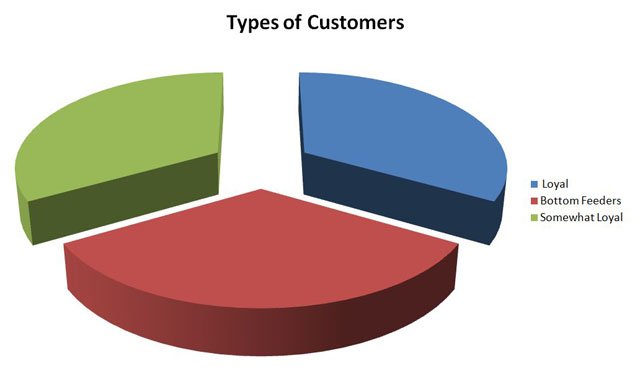Measuring Your FBO Customer Service Experience
/What’s Your CQ™ (Customer Quotient)?
In the recent series on Building Long-Term Profitable Customer Relationships, we talked about what makes a customer loyal (Are You the Restaurant Owner?); the perils of competing on fuel price (Do You Feel Lucky?); and finally, how to deliver the best customer service experience (Don’t Forget the Cheese!)
 Now it’s time to measure the effectiveness of all your good work to improve the Customer Service Experience!
Now it’s time to measure the effectiveness of all your good work to improve the Customer Service Experience!
Just as a good measure of one’s intellect is the Intelligence Quotient or IQ test, at Aviation Business Strategies Group (ABSG), we have developed the means to test your FBO’s Customer Quotient or CQ™. The results of determining your CQ™ is a good measure on the overall effectiveness of your FBO customer service initiatives.
The Customer Service Survey Tool
The first step in the process of understanding your CQ™ is to develop an accessible and meaningful customer service survey tool. By accessible, we are talking about the convenience of the customer’s access to the survey.
Obviously, you should have it in a printed form and accessible at your customer service desk and perhaps in the crew lounge. For the printed version, make sure the survey is formatted so it can be easily mailed, including a No Postage Necessary Business Reply indicia.
For further convenience, put up a survey box near the exit to the ramp where customers can drop the completed printed survey so they don’t need to carry it with them for mailing at a later date.
In addition to having the survey available at the locations mentioned above, consider including it as part of a customer receipt envelope or holder, similar to the kind of money holder you get when you cash a check at a bank.
Lastly, make the survey accessible online through your company Web site. Just make sure there is a space for the customer to enter the date of service and perhaps a customer transaction number if there is one on the receipt. This will help you determine the validity of the information.
Make the Survey Meaningful
Here are some basic tips to make the survey easy for the customer to fill out and meaningful to you as a true measure of the customer service experience.
- Keep it simple and logical. Don’t overthink the questions.
- Make the questions relevant. Ask only questions about the service experience.
- Keep it short. If you have more than five or six questions, your response rate will be way down.
- Make sure you ask the ultimate question: “Would you recommend our FBO?”
The last thing you should do is put together a point value system for each question so you can convert the results into a metric that can be plotted over time. For instance, say you wanted to measure the following where 1 is a low score and 10 is the high score:
- Quality of line service: Rate 1 to 10 points.
- Friendliness of staff: Rate 1 to10 points.
- Cleanliness of facility/restrooms: Rate 1 to 10 points.
- Pilot amenities: Rate 1 to 10 points.
- Passenger amenities: Rate1 to 10 points.
With this section of your survey, you could have a potentially high score of 50 points if your customers rated all these items at 10 points each.
Now, let’s throw one last question into the mix. It’s really the most important, so we give it a value of 50 points. Yes, it’s that important! It’s either yes or no. All or nothing!
- Would you recommend? Yes/No?
- Yes = 50 Points.
-
No = 0 Points.
The Sum of All Parts
In a perfect world, your customer service experience could potentially score 100 points. In keeping score over time, create a chart using the data obtained for the first five questions.
You may want to do a chart on a weekly basis at first. However, creating a monthly snapshot over a 12-month period will probably give you the best idea of the way your customer service experience is trending.
Then, do a separate chart to keep track of the Would you recommend? question. State the results as a percentage of the amount of customer service surveys returned.
The last thing you may want to do is post the results for all your employees to see. Follow-up with an employee team meeting and encourage feedback from both your customers and your employees regarding how to improve your customer service experience.
©The terms/phrases “Customer Quotient™” and “CQ™” are propriety in their intended use and considered intellectual property of Aviation Business Strategies Group.
Ron Jackson
Ron Jackson is co-founder of ABSG and president of The Jackson Group, a public relations agency specializing in aviation and FBO marketing. He has held management positions with Cessna Aircraft and Bozell Advertising and is the author of Mission Marketing: Creating Brand Value and co-author of Don’t Forget the Cheese!, the Ultimate FBO Customer Service Experience.






